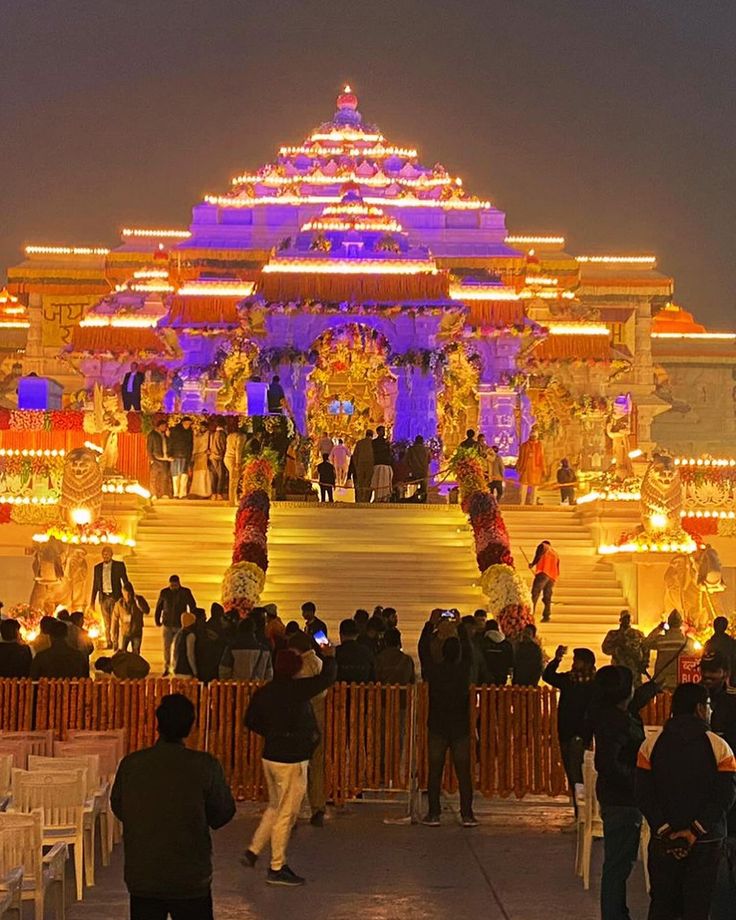Ayodhya: The Sacred City of Eternal Significance
Introduction
Ayodhya, an ancient city located in Uttar Pradesh, India, is one of the most significant cities in Hinduism. With its roots deeply embedded in Indian mythology, religion, and history, Ayodhya is more than just a city; it is a symbol of cultural unity, spiritual devotion, and historical importance. As the birthplace of Lord Rama, Ayodhya has been a site of worship, pilgrimage, and political significance for centuries. This article explores the biography, historical background, daily life impacts, and societal contributions of Ayodhya, focusing on its deep cultural significance and role in shaping Indian society.
1. The Historical and Mythological Roots of Ayodhya
It’s history dates back over 5,000 years and is intertwined with the epic narrative of the Ramayana, one of the greatest Hindu epics. According to the legend, Ayodhya was the birthplace of Lord Rama, the seventh avatar of Lord Vishnu. The city is described as a magnificent kingdom ruled by King Dasharatha, Rama’s father. Over time, It became a prominent center of Hindu worship, revered not just in India but globally.
It has been a major cultural and religious center, attracting pilgrims from across the world. Throughout its history, it has been ruled by various dynasties, including the Mauryas, Guptas, and Mughals, each leaving a mark on the city’s architecture and culture. The city has also witnessed numerous historical events, with the Babri Masjid demolition in 1992 and the subsequent construction of the Ram Mandir in the early 21st century becoming central to its modern-day identity.
2. Cultural and Daily Life Impacts in Ayodhya
It’s daily life is deeply infused with religious practices. The Ram Janmabhoomi, believed to be the exact birthplace of Lord Rama, remains the focal point of the city. Devotees visit the Ram Mandir and other temples throughout the city to offer prayers and participate in religious rituals. Pilgrims from all over India travel to Ayodhya to perform parikrama (circumambulation) of the city, which holds spiritual significance.
Locals engage in daily activities that are intertwined with devotion, such as performing aarti (prayers) on the ghats of the Sarayu River, offering prayers at temples, and participating in festivals. The river itself is an important spiritual symbol, with people taking holy dips to cleanse themselves spiritually. Markets around Ayodhya are bustling with religious items like idols of Lord Rama, sacred books, and puja thalis, reflecting the city’s vibrant religious culture.
3. The Significance of Religious Festivals and Observances
It is known for its grand celebrations of religious festivals, with Diwali being the most important. The city is said to have been the homecoming place of Lord Rama after his exile and victory over Ravana. Thus, the festival of Diwali is celebrated with immense joy and grandeur, with grand processions, fireworks, and rituals. Ram Navami, which marks the birth of Lord Rama, is another major celebration where thousands gather to participate in processions and religious activities.
Another significant festival is Makar Sankranti, during which devotees perform rituals at the Sarayu River, believing it will bring good fortune and blessings. These festivals not only draw pilgrims from across India but also contribute to the local economy, with many businesses catering to the needs of tourists and religious devotees.
4. Significance and Social Contributions of Ayodhya
It’s significance extends beyond religious practices and festivals. The city has contributed significantly to the development of Indian philosophy, literature, and cultural traditions. The Ramayana, attributed to the sage Valmiki, has inspired generations of thinkers, writers, and artists. This ancient epic, narrating the life and virtues of Lord Rama, continues to play an influential role in shaping the ethical and moral framework of Indian society.
It’s significance is also political. As the birthplace of Lord Rama, the city has been at the center of political debates, particularly regarding the Ram Janmabhoomi-Babri Masjid dispute. The resolution of this issue and the construction of the Ram Mandir in recent years have reaffirmed Ayodhya’s place as a symbol of Hindu unity and faith.
5. Facts and FAQs About Ayodhya
- Why is important in Hinduism?
It is important because it is believed to be the birthplace of Lord Rama, making it a major pilgrimage destination for Hindus. - What is the Ram Mandir?
The Ram Mandir is a temple dedicated to Lord Rama, built at the site believed to be his birthplace. The construction of the temple follows the resolution of a longstanding dispute over the location, which was once home to the Babri Masjid. - How do people celebrate Diwali?
Diwali is celebrated with great enthusiasm in It, with large-scale prayers, processions, and lighting of diyas (oil lamps) to mark the return of Lord Rama after his exile. - What is the Ram Janmabhoomi?
Ram Janmabhoomi is the location believed to be the birthplace of Lord Rama, and it is a significant religious site in Ayodhya.
6. Ayodhya’s Role in Modern Society
It continues to shape modern society, serving as a reminder of the importance of faith, unity, and culture. The city’s spiritual significance has a lasting impact on the beliefs and practices of millions of people. Moreover, It plays an essential role in maintaining India’s cultural diversity and harmony. It is a testament to the enduring importance of tradition and the ongoing influence of mythology on modern life.
The ongoing development of Ayodhya, including the construction of the Ram Mandir, has further cemented its place as a beacon of faith and national pride. It also serves as an example of how religion, culture, and history intersect to shape the identity of a society.
Conclusion
It is much more than just a city; it is a living example of India’s rich cultural and religious heritage. From its connection to the epic Ramayana to its vibrant religious life and festivals, Ayodhya continues to play a pivotal role in shaping Indian spirituality, culture, and society. Its impact on modern India is profound, and its legacy as a spiritual hub remains intact, influencing future generations to cherish and uphold the values of tradition, faith, and unity.










